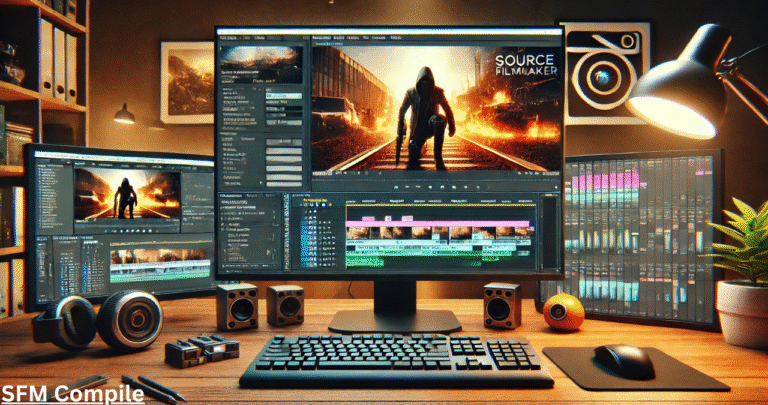If you’re working with Source Filmmaker (SFM) or involved in digital animation, you’ve probably come across the term “sfmcompile”. Understanding sfmcompile is crucial for efficiently managing SFM projects, optimizing animations, and enhancing production workflows.
In this article, we’ll break down what sfmcompile is, how it works, and why it’s essential for animators. Whether you’re just starting with SFM or looking to improve your rendering process, this guide will equip you with everything you need to know about SFM.
What is SFMCompile?
SFMCompile refers to the process of compiling models, textures, and animations specifically for use within Source Filmmaker (SFM). It’s a technical workflow that ensures your assets are properly prepared for smooth rendering and efficient editing.
In simple terms, sfmcompile translates various development files into a format that SFM can recognize and use. This step is critical for anyone creating custom models, modifying scenes, or optimizing SFM animations for professional output.
Why is SFMCompile Important?
Proper compilation using sfmcompile offers numerous advantages:
- Performance Optimization: Compiled assets load faster and run smoother in SFM.
- Error Reduction: Well-compiled models reduce bugs and glitches during animation rendering.
- Customization: SFMCompile allows for customization of models, textures, and rigs to suit specific project needs.
- Professional Output: Essential for creating polished, production-quality videos.
Failing to compile correctly can lead to long load times, missing textures, or even project crashes, affecting your workflow efficiency.
How to Use SFMCompile Effectively
1. Prepare Your Assets
Before beginning the compilation process, ensure your models, textures, and animations are ready:
- Models should be clean, with properly named materials.
- Textures must be optimized (size, format) for performance.
- Animations should be finalized and exported correctly.
2. Understand the Basic Commands
SFMCompile typically involves using tools like studiomdl or Crowbar to compile assets. These programs read a QC (QuakeC) script file that tells the compiler what to do.
Where mymodel.qc contains instructions for how the model should be compiled.
3. Common Compilation Tools
Here are a few popular tools for sfmcompile:
- Crowbar (highly recommended for beginners and professionals)
- Valve’s Source SDK Tools
- Custom batch scripts for automation
Each tool comes with detailed documentation to assist users at all levels.
Best Practices for SFMCompile
Keep Your Files Organized
Store your models, textures, and animations in clearly labeled folders. Good organization speeds up the compiling process and reduces errors.
Optimize for File Size and Quality
Large files can slow down SFM. Use compression techniques where necessary, but avoid compromising too much on visual quality.
Regular Testing
Compile and test your assets frequently during development. Early detection of issues saves time and prevents major rework later.
Common Errors in SFMCompile and How to Fix Them
Missing Textures
Often caused by incorrect material paths. Double-check your .vmt files and make sure textures are properly referenced.
Model Errors
If your model won’t compile, the issue might be with the QC script syntax or incorrect bone hierarchy. Reviewing Valve’s official documentation can help diagnose these problems.
Animation Glitches
Check that all animation sequences are properly defined in the QC file and that the skeleton matches the intended rig.
Learn more about solving common SFM errors here.
Helpful Resources for Mastering SFMCompile
These reputable sources provide tutorials, detailed guides, and community support for advancing your SFM skills.
Conclusion
Understanding and mastering sfmcompile is a game-changer for anyone working with Source Filmmaker. From better project performance to higher-quality final outputs, properly compiled assets are the backbone of any successful animation project.
Ready to take your SFM projects to the next level? Start experimenting with sfmcompile today, and don’t hesitate to refer to the resources shared above. Happy animating!


